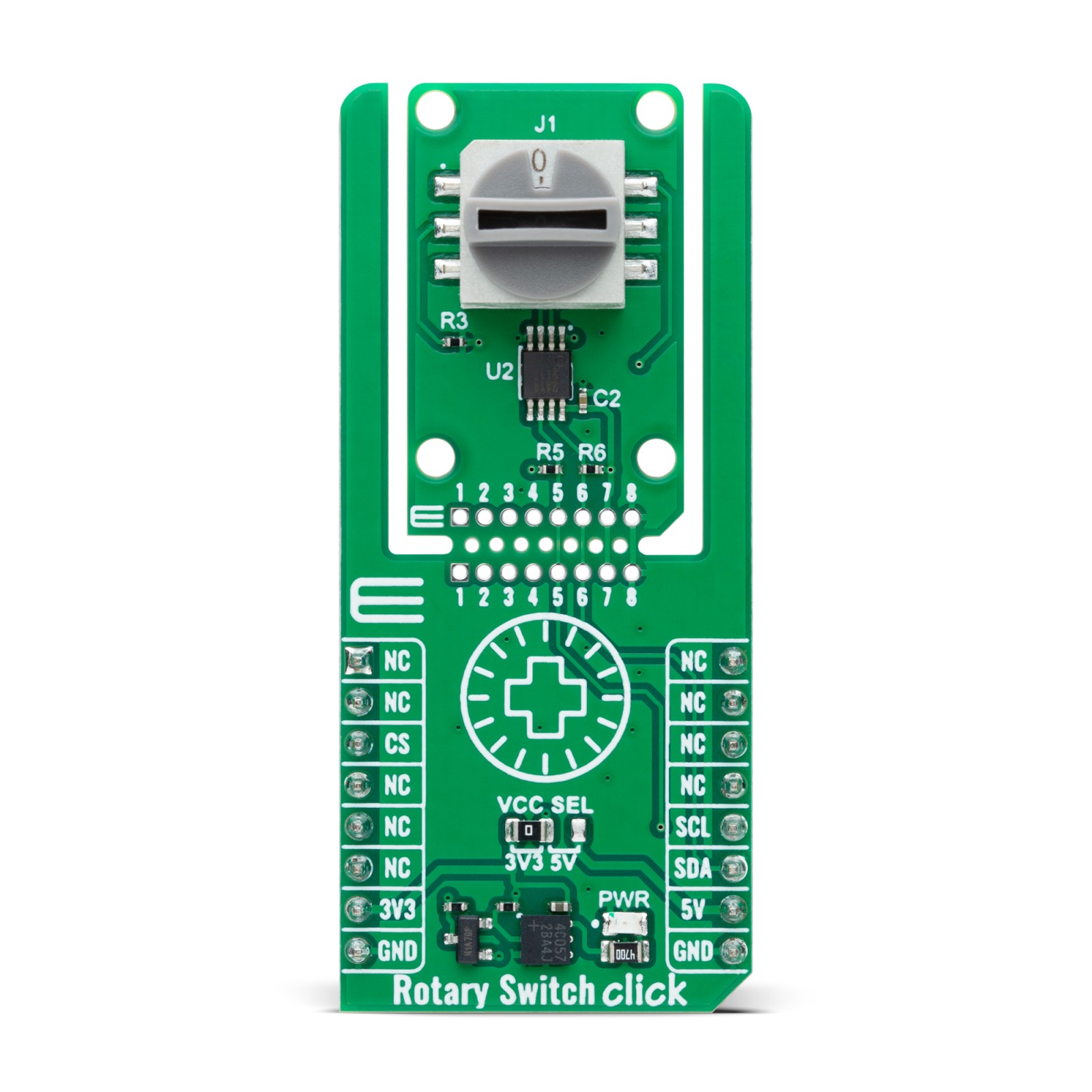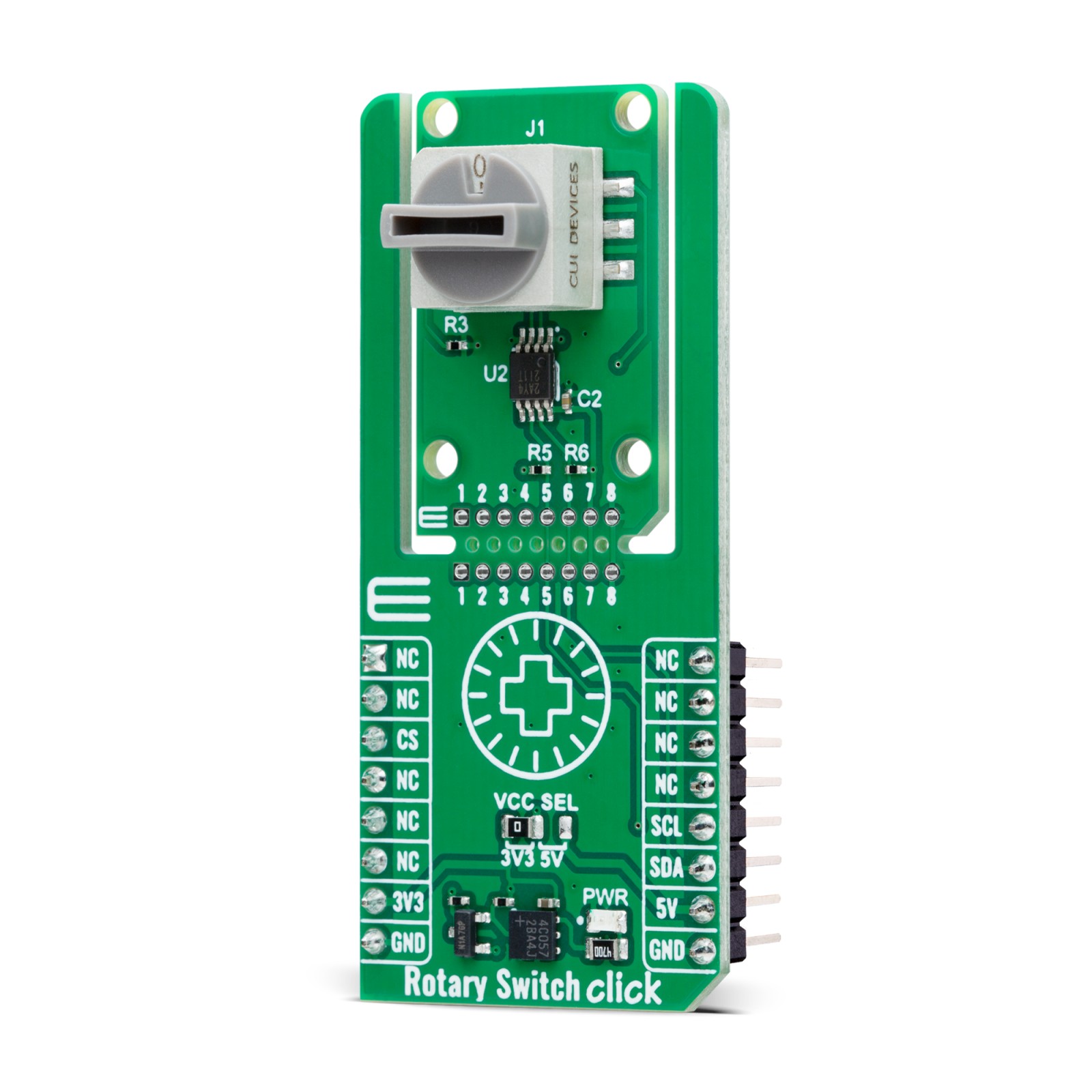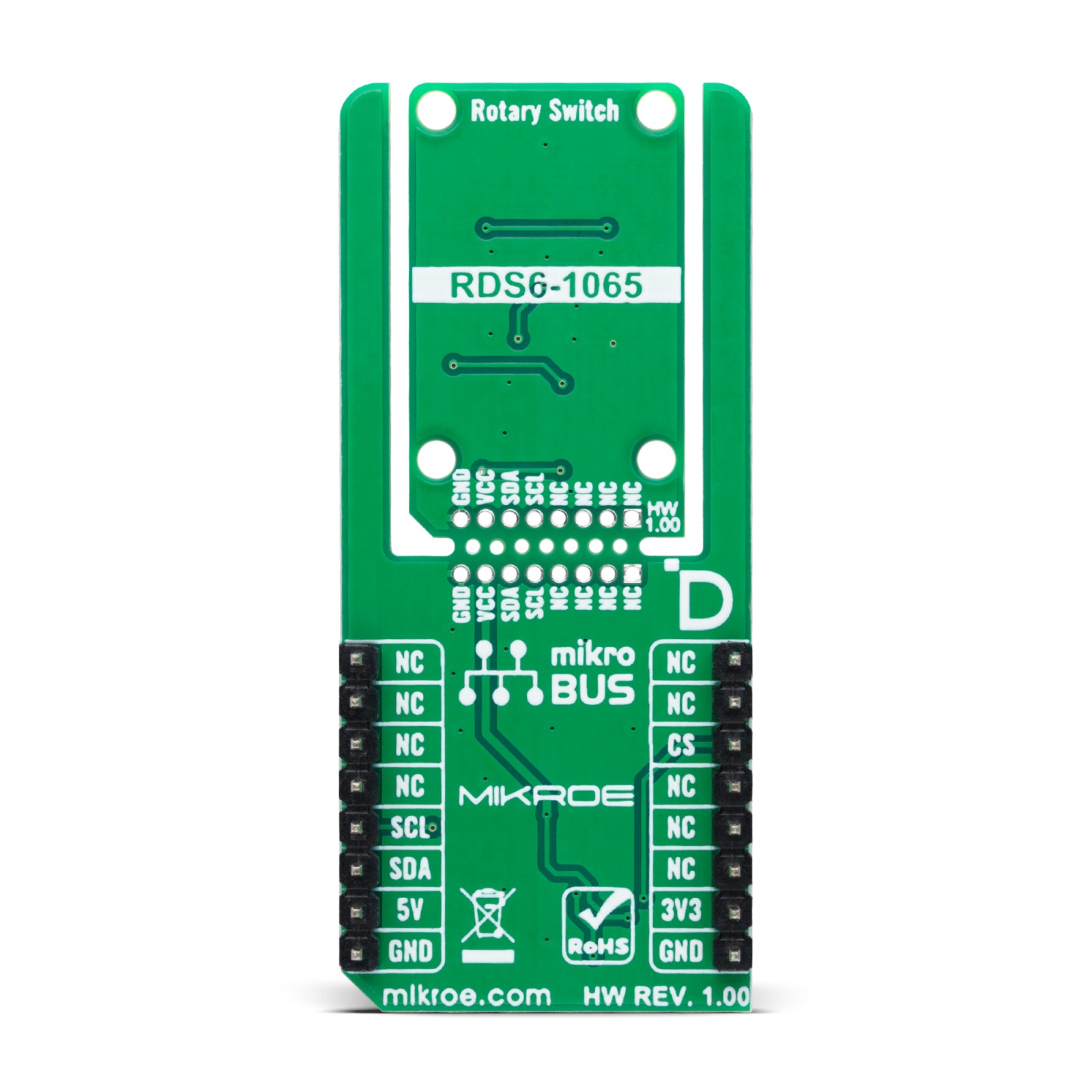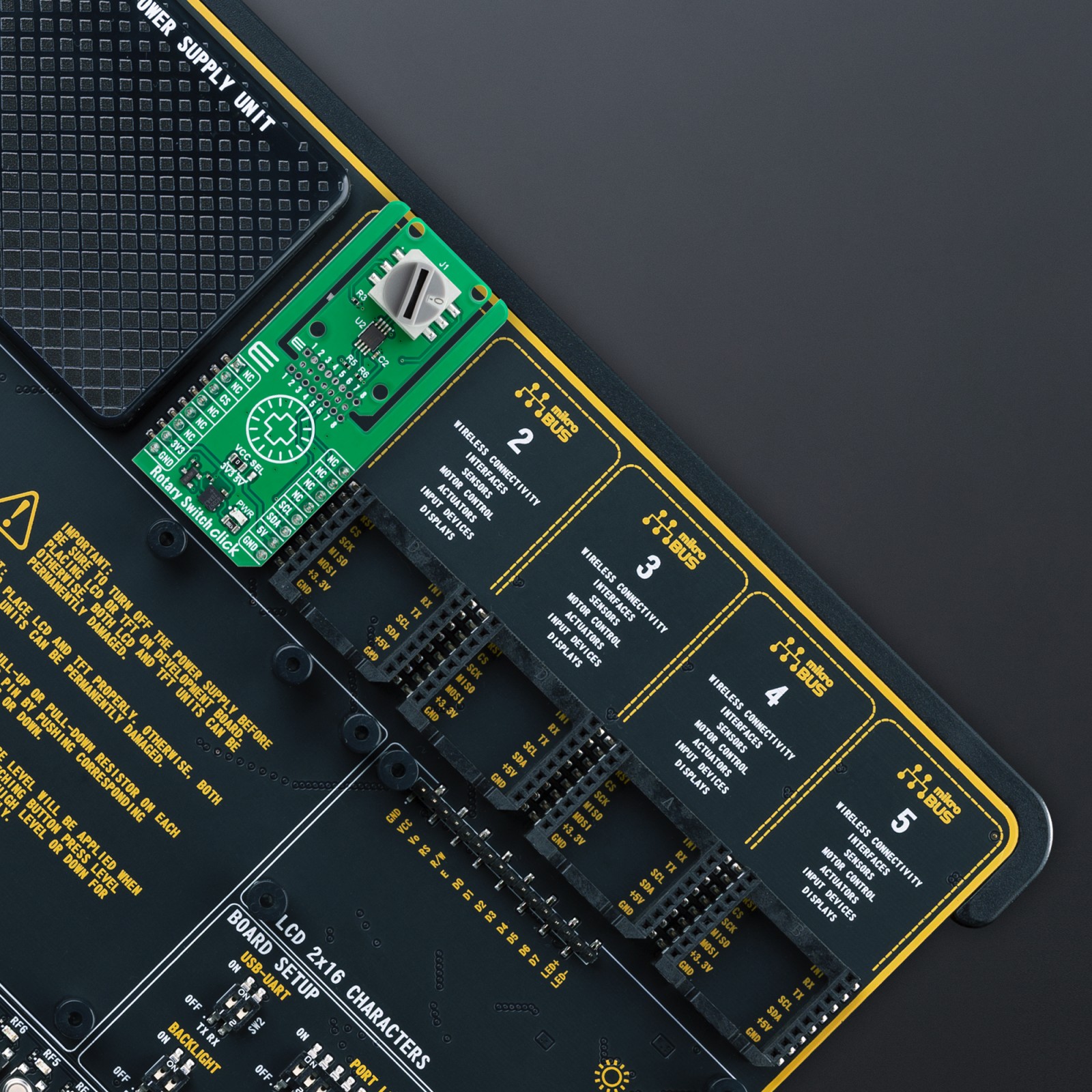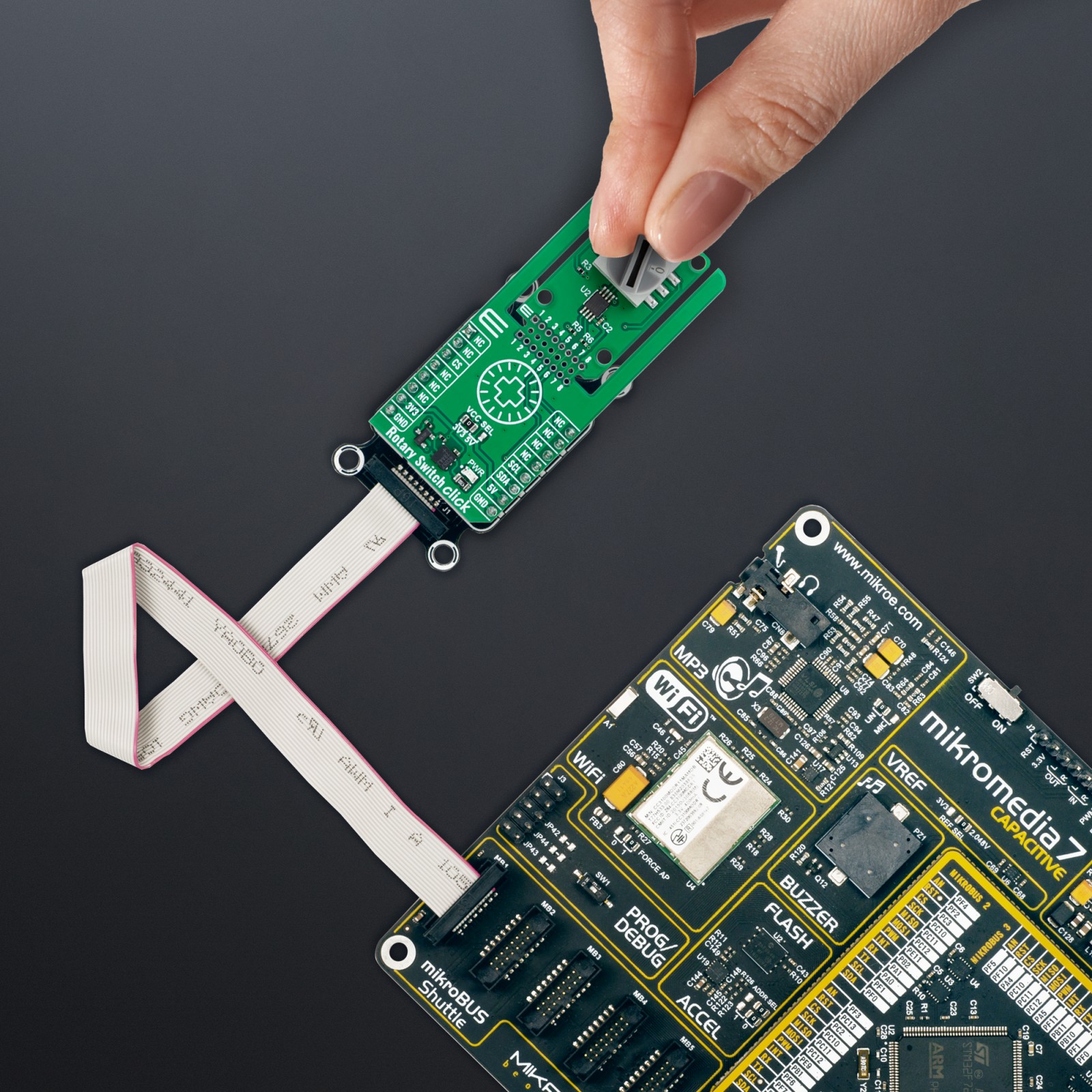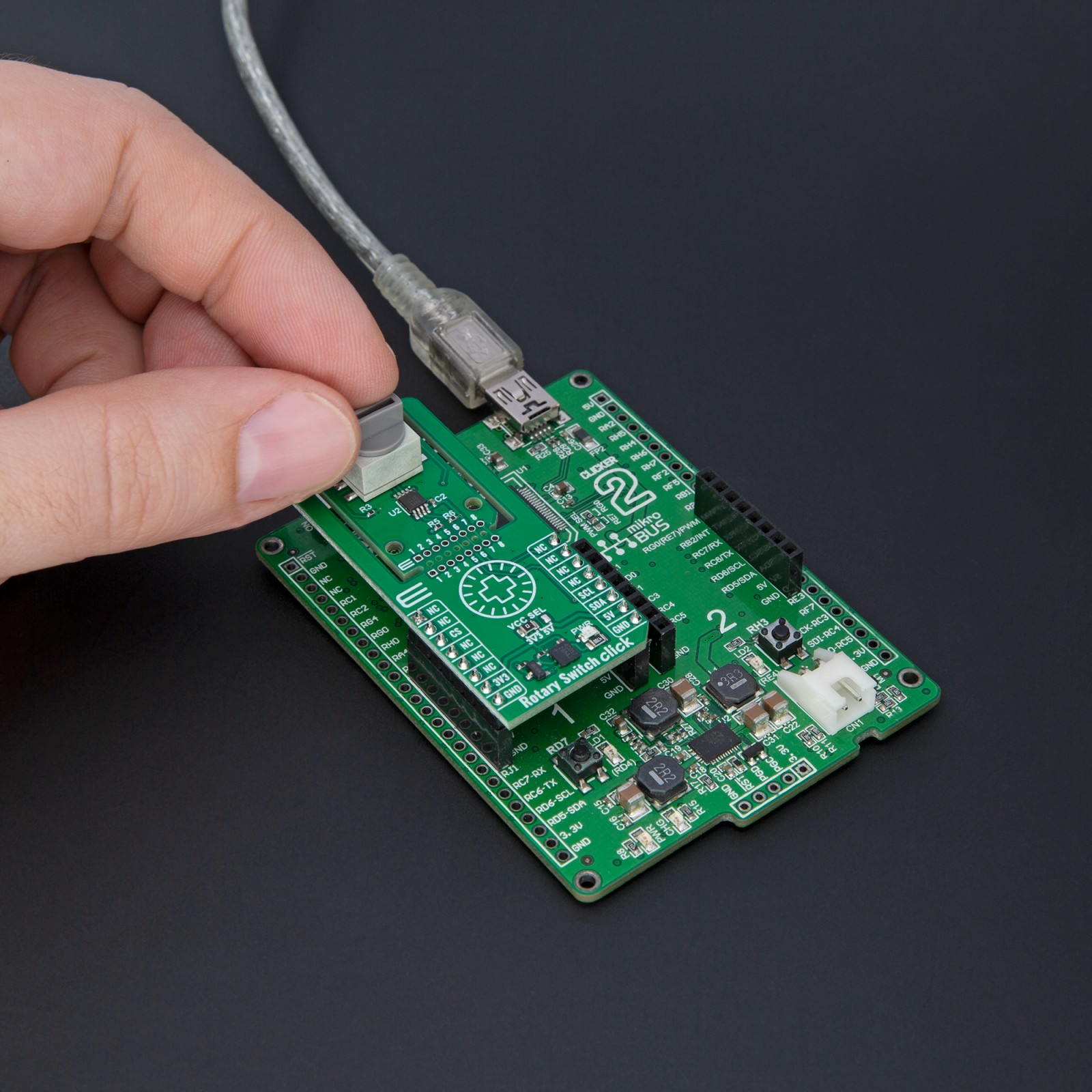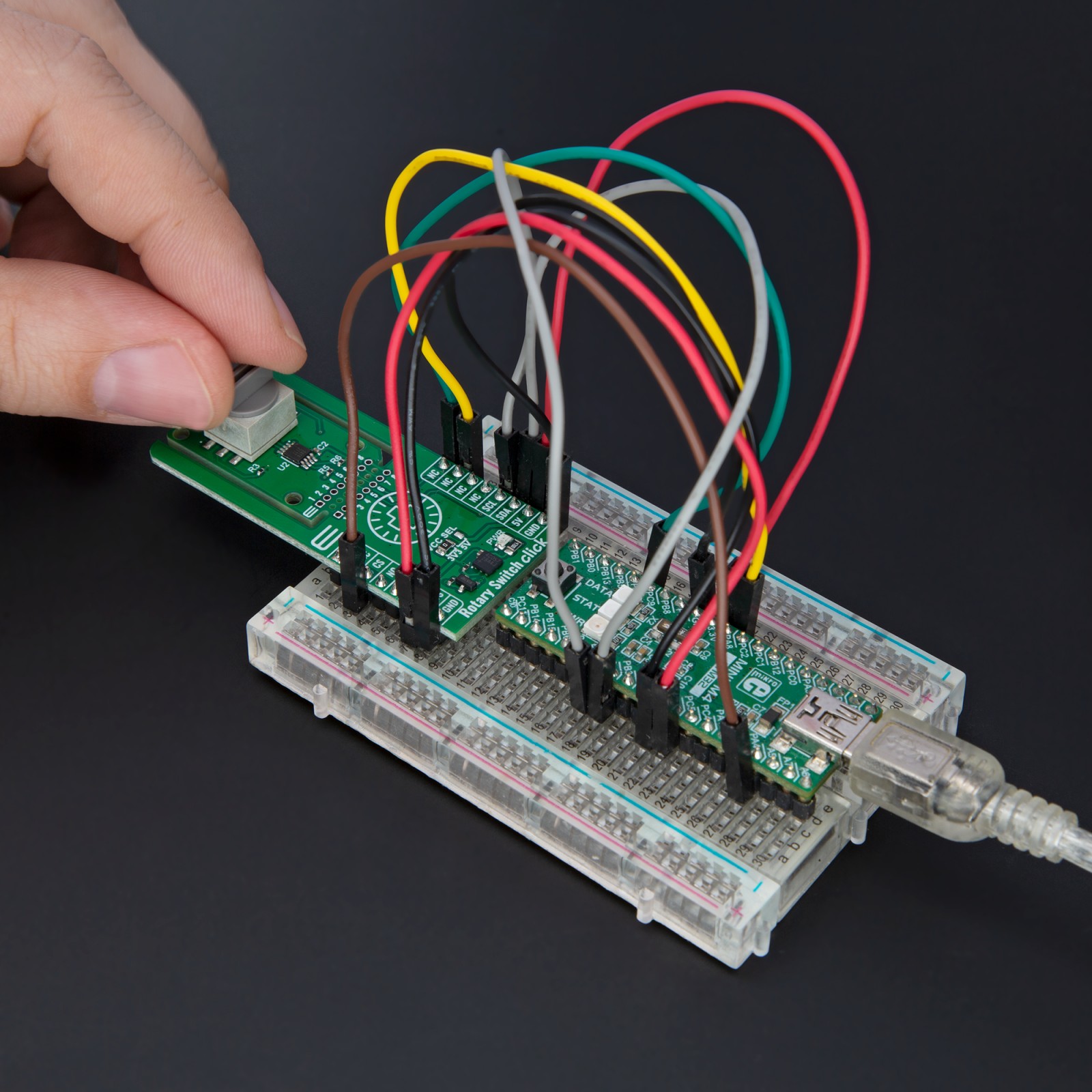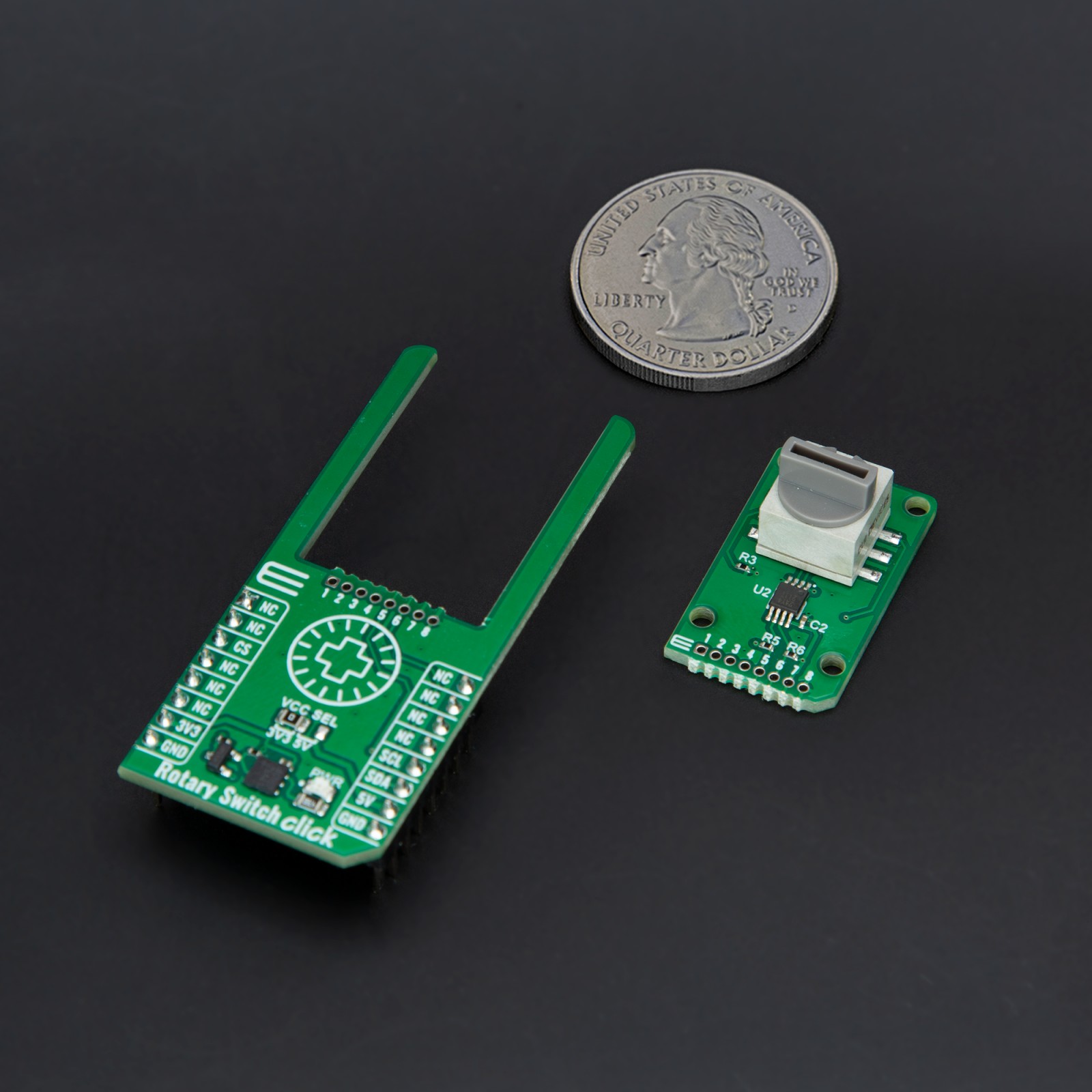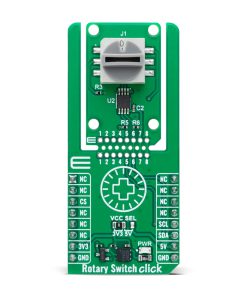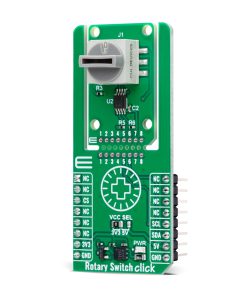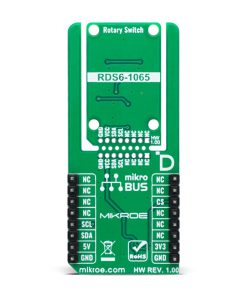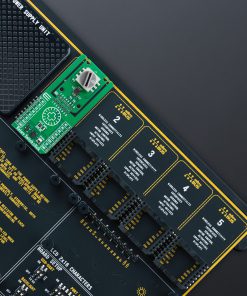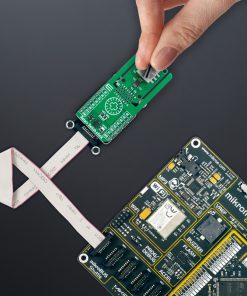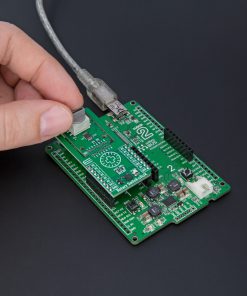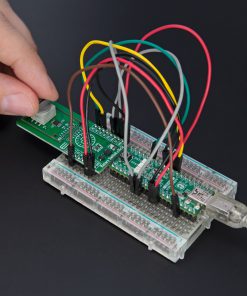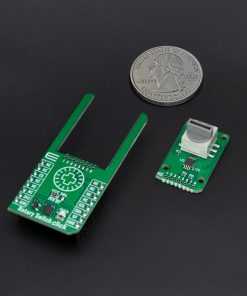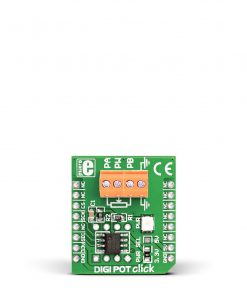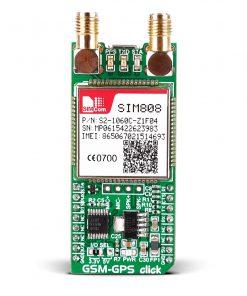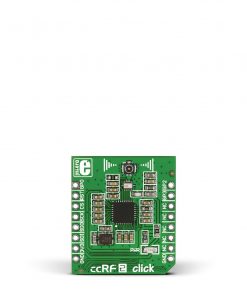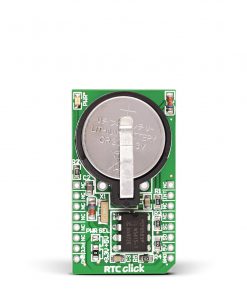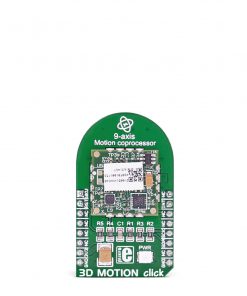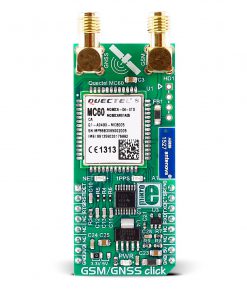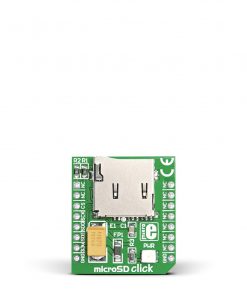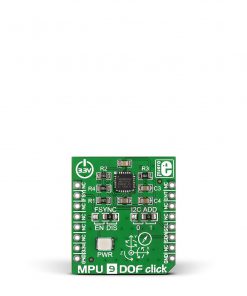Rotary Switch Click
R405.00 ex. VAT
Rotary Switch Click is a compact add-on board for applications requiring precise rotary input. This board is based on the RDS6-16S-1065-1-SMT, a 16-position notched cap surface-mount rotary DIP switch from Same Sky. This switch features continuous 360-degree actuator rotation, a 2.54mm pin pitch, and robust construction with a contact resistance of 80mΩ and a maximum operating torque of 700gf*cm, ensuring reliable operation for up to 10,000 steps. The board supports the innovative Click Snap feature, allowing the rotary switch to operate autonomously when detached, providing flexibility in various implementations. It connects to the host MCU via the TCA9536, a 4-bit I2C I/O expander from Texas Instruments, simplifying switch state monitoring. Ideal for industrial equipment, consumer electronics, and automotive systems, Rotary Switch Click offers a versatile and durable solution for mode selection and user-configurable settings in demanding environments.
Rotary Switch Click is fully compatible with the mikroBUS™ socket and can be used on any host system supporting the mikroBUS™ standard. It comes with the mikroSDK open-source libraries, offering unparalleled flexibility for evaluation and customization. What sets this Click board™ apart is the groundbreaking ClickID feature, enabling your host system to seamlessly and automatically detect and identify this add-on board, alongside a Click Snap feature introducing a new level of flexibility and ease of use.
Stock: Lead-time applicable.
| 5+ | R384.75 |
| 10+ | R364.50 |
| 15+ | R344.25 |
| 20+ | R331.29 |

